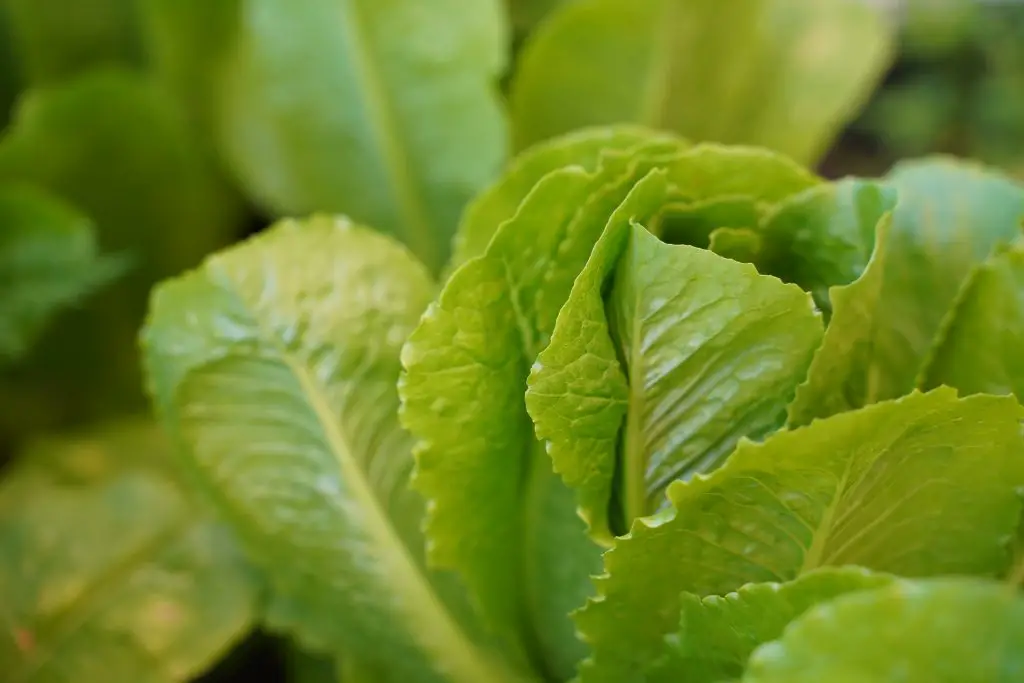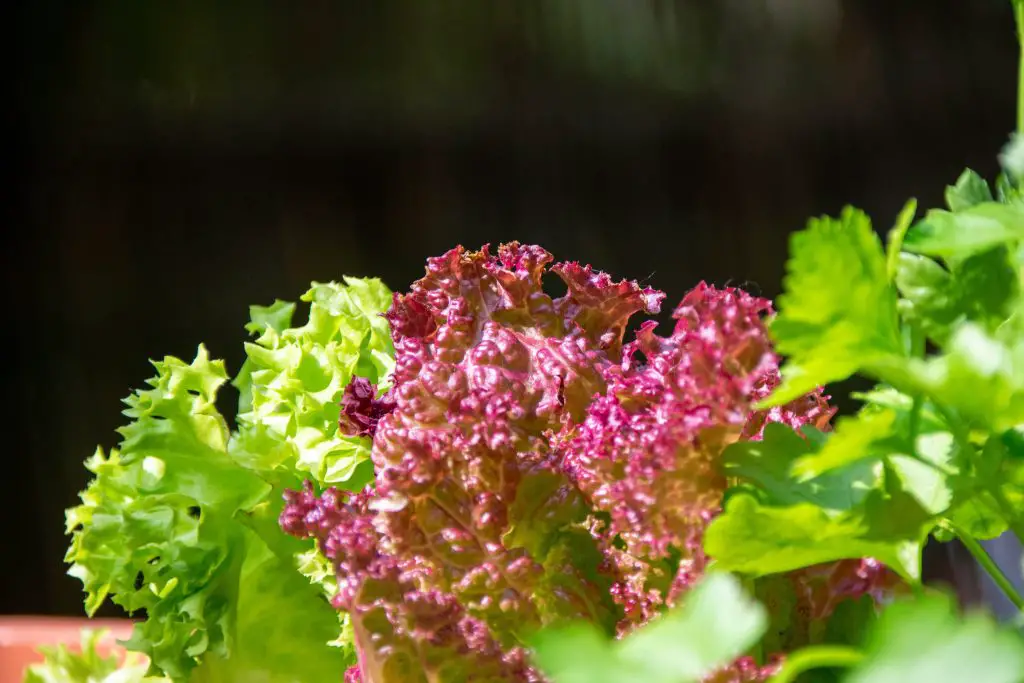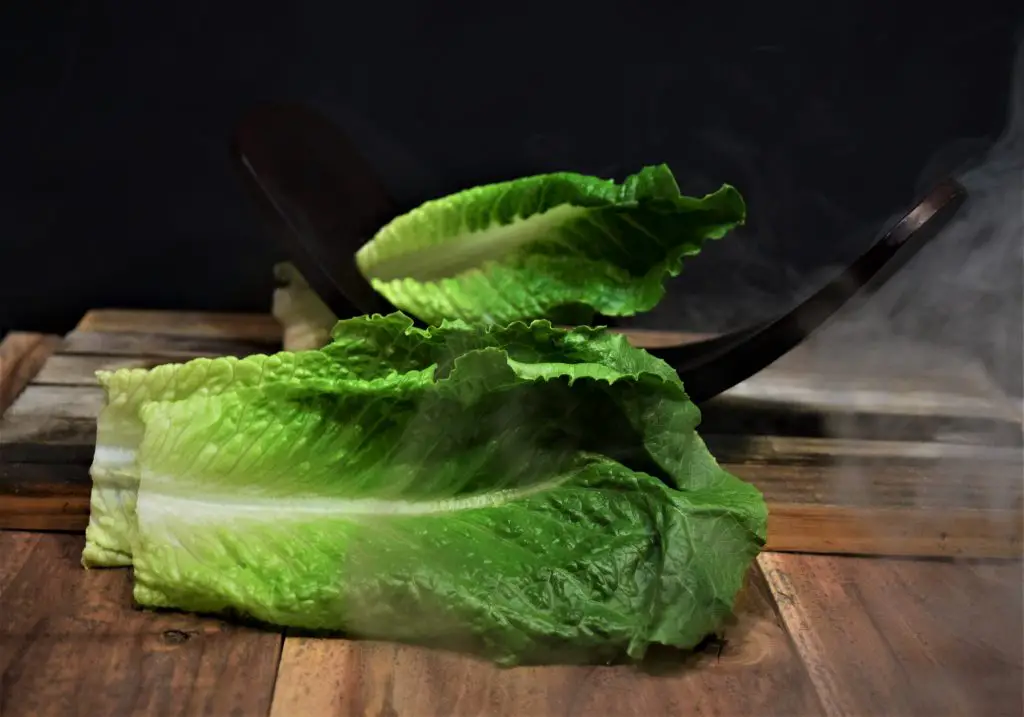How To Harvest Lettuce Without Killing The Plant. Lettuce is one of the most popular vegetables to grow in the garden at home because it provides a fresh source of lettuce leaves for months on end with a quality that cannot be matched by store-bought products. However, one of the questions that is commonly asked is how can you harvest lettuce without killing the plant.
Lettuce can be harvested multiple times successfully without damaging the plant itself by carefully removing the outer leaves individually. This method works best with cut and come again loose leaf varieties, however, it can also be applied to headed varieties as well.
The method of picking the leaves individually works far better than taking a pair of scissors and cutting straight across the top of the plant because the plant recovers much quicker. By removing only the outer leaves of the plant which are usually the oldest leaves the central leaves are allowed to continue to grow.
As photosynthesis within the plant is continuous there is no risk of killing the plant using this process. Typically you can expect to be able to harvest from the plants every week or so depending upon the severity of the harvest that you take and in many cases, you can get at least three or four harvests from the plant.
However, this is highly dependent upon the climatic conditions that the plant is being grown in as many lettuce plants will quickly turn bitter and bolt in warmer weather. To avoid these problems, it is best to have several lettuce crops growing at the same time at different stages to ensure a continuous supply.

How To Ensure That You Have Lettuce Year Round
One of the biggest problems, as mentioned above, in growing lettuce, is that it can quickly turn bitter in the summer when conditions are relatively hot. However, to avoid some of these problems there are several strategies that you can employ that will increase the chances of you having lettuce year-round.
The first tactic that I like to employ is to sow lettuce seeds regularly throughout the season, however, if you are someone that has a busy family life it can be difficult to sow the seeds consistently enough to ensure that you have a lettuce supply year-round.
To overcome this issue the method that I use is a simple one that ensures that I never forget to sow seeds. Whenever a tray of lettuce seeds has reached the point at which it is ready to be planted out into the garden I sow my next lot of seeds. This usually means that I have at least 3 lots of lettuce seedlings growing at any one time.
This method works for most of the year, however, when the conditions get very hot it is advisable to sow even more frequently than that to avoid having a period of time when all your lettuce turns bitter.

Additionally, during these periods it is also advisable to plant the lettuce seedlings in different positions around the garden to further spread the harvest. This is best done by planting both in the shade and indirect sunlight. However, I would generally avoid planting in shade in winter as a plant simply won’t grow.
In addition to planting the lettuce plants in different locations around the garden, it is also advisable to water the plants very regularly to avoid any chances of heat stress which is another common reason why lettuce plants quickly become bitter.
The other thing that I would strongly advise is to use seed packets with a mixture of lettuce varieties. This is advantageous because different lettuce varieties do mature at slightly different rates which again spread the harvest, particularly in the warmer conditions. Using these types of seed mixtures also provides a really easy way to get a range of different lettuces into the garden at any given time which will add variety to the salads that you make.
If you were unsure where to get seeds, the place that we would recommend that you try is seeds now as they specialize in heirloom seeds which are advantageous because you can save the seeds for the following year.
The last important thing that I would highly recommend that you do is to ensure that you remove any plants from the garden the instant that they become bitter unless you want to save seeds from the plant which is relatively easy to do. Many gardeners have difficulty removing lettuce plants that still look very nice but have gone bitter, however, if you are not ruthless, particularly if you have a small garden you will end up reducing the output of your garden.
Saving Lettuce Seeds For The Following Year
Saving lettuce seeds for the following gear is relatively easy to do, however, I would generally only do this in the height of summer as this tends to take advantage of the fact that lettuce plants are growing extremely quickly and have a tendency to run to seed quickly which means that it will reduce the amount of lost productivity that you have while waiting for the plant to produce seeds.
Once the plant bolts, it will typically produce a flower shoot which will reach a height, in most cases, of approximately 1 to 2 ft tall and then begin to produce flowers. Once the flowers have dieback the seed will begin to dry out on the plant.

The simplest way to collect the seed is to remove the entire flower shoot at its base and place it upside down into a plastic bag and shake it around to collect all of the seed. This process will maximize the amount of seed that you collect, however, you will also collect a lot of debris in the process.
If you want to reduce the amount of debris in your seeds you can pass them through a flour sieve which will get rid of the smaller particles quickly and easily. This process will not remove all of the debris but it will certainly clean it up quite a bit.
I hope you found this article useful and have great success growing your lettuce at home in your own garden, if you have any additional comments or questions please leave them in the section below.
Relevant Articles
How Long Does It Take Lettuce Seeds To Germinate? How Does Temperature Effect It?
How Much Does One Lettuce Plant Yield?
Will Deer Eat Lettuce? And How To Stop Them

